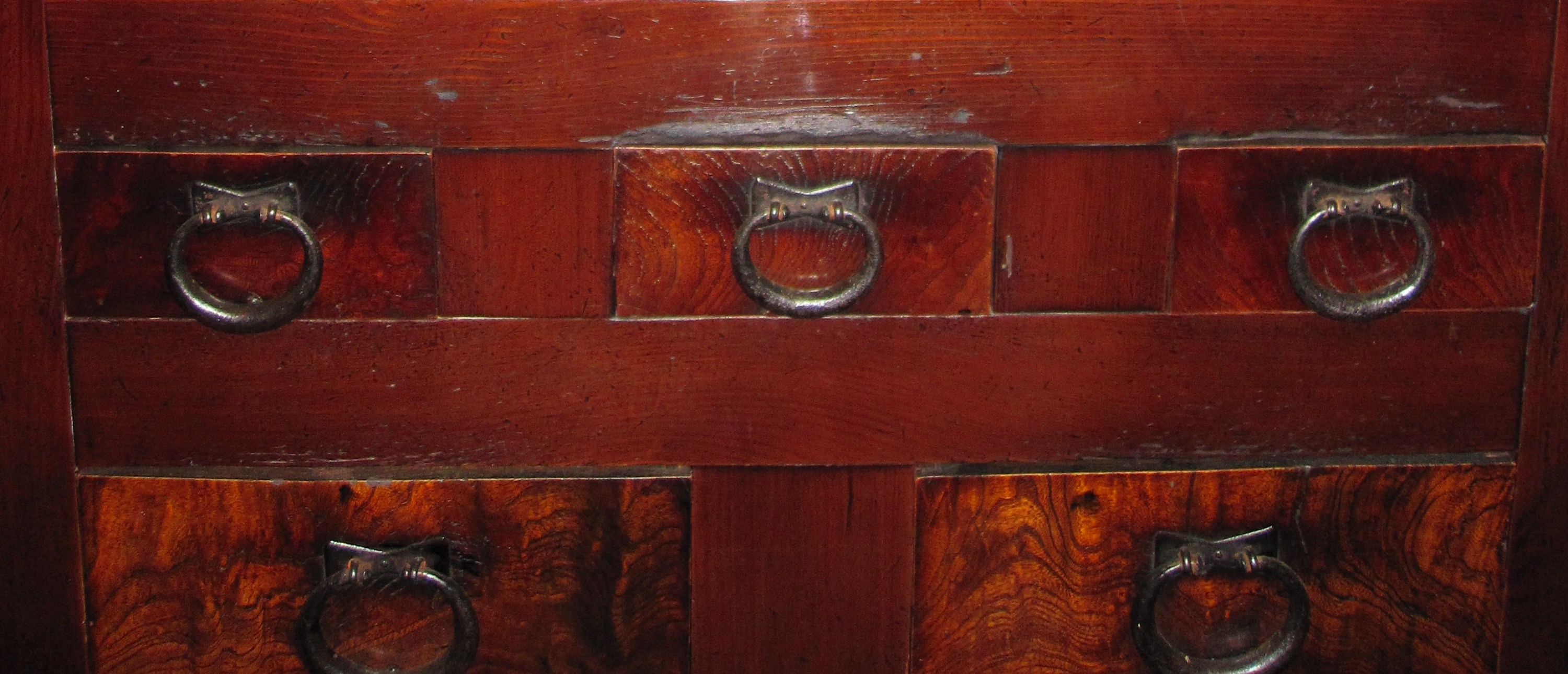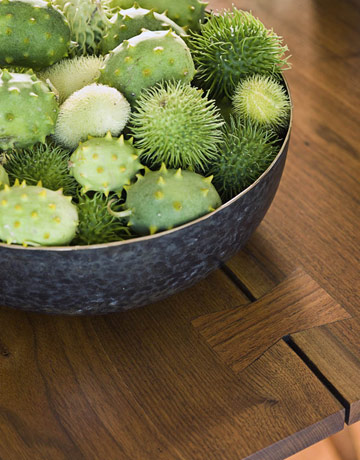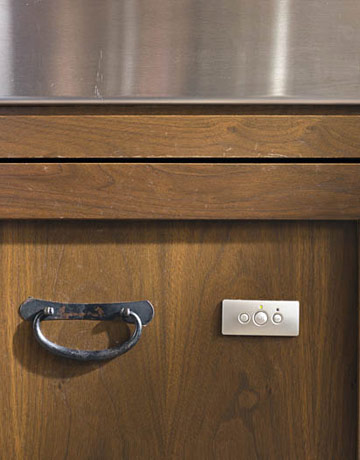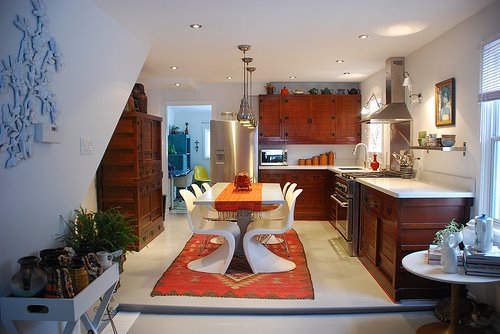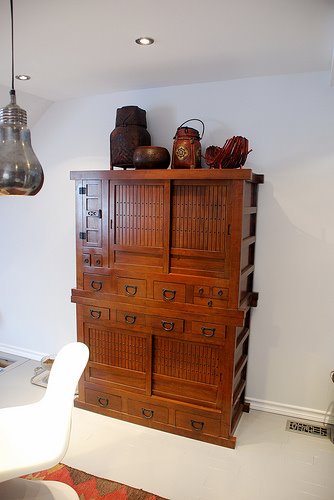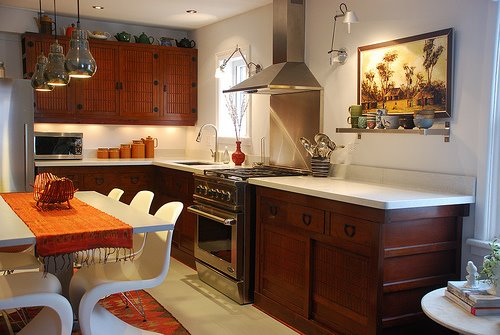Styles of tansu include the well-known kaidan-dansu (step cupboard) used for both storage and access to upper floors, the rare and unusual kuruma-dansu (wheeled chest) which could be easily moved, many different styles of isho-dansu (clothing chest) used to store kimono, choba-dansu (merchants chest) used to store valuables and documents and, for the purposes of this post, mizuya-tansu (kitchen cupboard)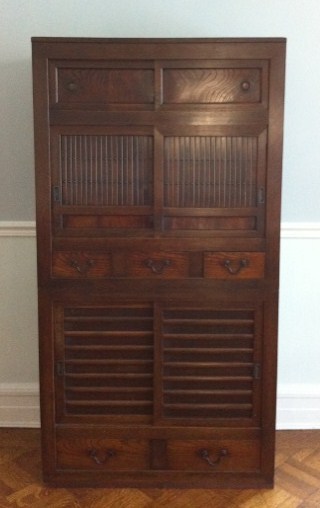 , which were the heart of kitchen storage. Like many tansu, mizuya tansu were made of two horizontal cabinet pieces that stacked one above the other, allowing for movement and flexibility, although they lack the carrying handles often found on smaller tansu. While depth is fairly constant, width can vary from narrow styles (30-40″) which tend to have simpler more symmetrical fronts to wider styles (60-80″) in which it is common to have an asymmetrical design with varied small doors and drawers. A particularly charming detail that is commonly found is a sliding door lined with chicken wire or paper allowing for some visual display and air movement.
, which were the heart of kitchen storage. Like many tansu, mizuya tansu were made of two horizontal cabinet pieces that stacked one above the other, allowing for movement and flexibility, although they lack the carrying handles often found on smaller tansu. While depth is fairly constant, width can vary from narrow styles (30-40″) which tend to have simpler more symmetrical fronts to wider styles (60-80″) in which it is common to have an asymmetrical design with varied small doors and drawers. A particularly charming detail that is commonly found is a sliding door lined with chicken wire or paper allowing for some visual display and air movement. 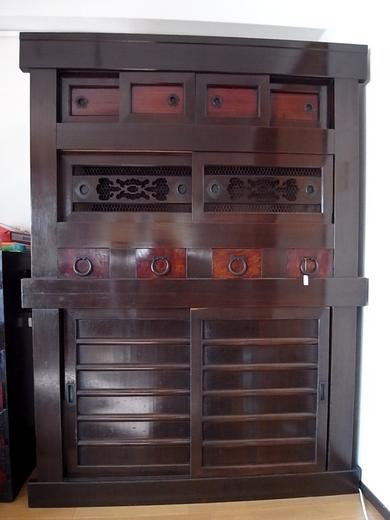
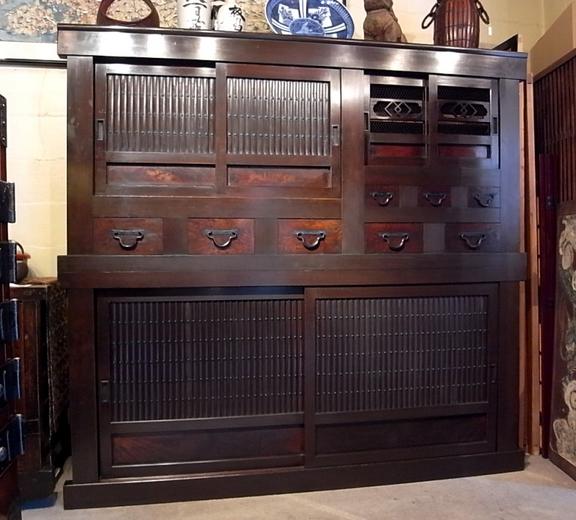
Today, adding a tansu into a design scheme is easy, as they work in both traditional and modern settings. Michael Smith uses a beautiful Edo period mizuya tansu in a completely modern kitchen, just in the manner for which it was designed. 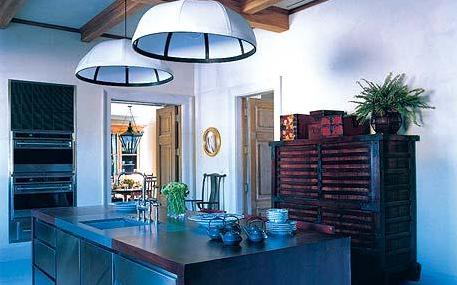
In the Japanese-inspired kitchen designed by Marguerite Rogers and featured in House Beautiful, traditional sliding doors based on tansu were used for the kitchen cabinets. The iron work details and wood joinery mimic the tradional techniques found on antique tansu.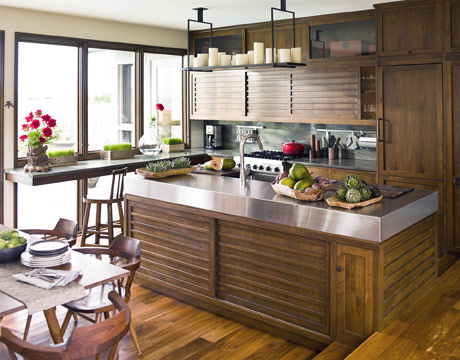
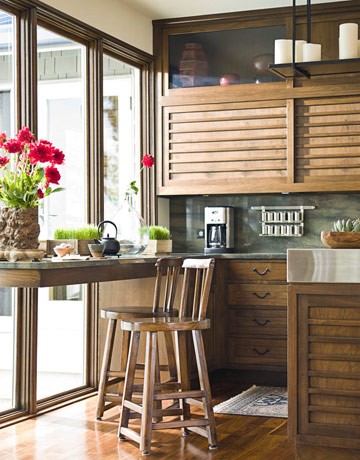
Compare the details of the iron work and the wooden joinery on these new cabinets with the details on the antique ones above. Pretty amazing how the dishwasher has been disguised.
Modern day cabinet companies such as Greentea are also looking to tansu for kitchen cabinet design. Kim at Desire to Inspire worked with them to create her dream kitchen. In addition to cabinets, she chose a free-standing tansu for extra storage.
And of course, there is no reason why you cannot use your mizuya tansu anywhere else in the house. They are great in the dining room, holding bed linens or clothes in the bedroom, hiding knitting stashes and all sorts of junk. Some later mizuya or choba tansu have glass panels for display – they too work perfectly in kitchens and dining rooms.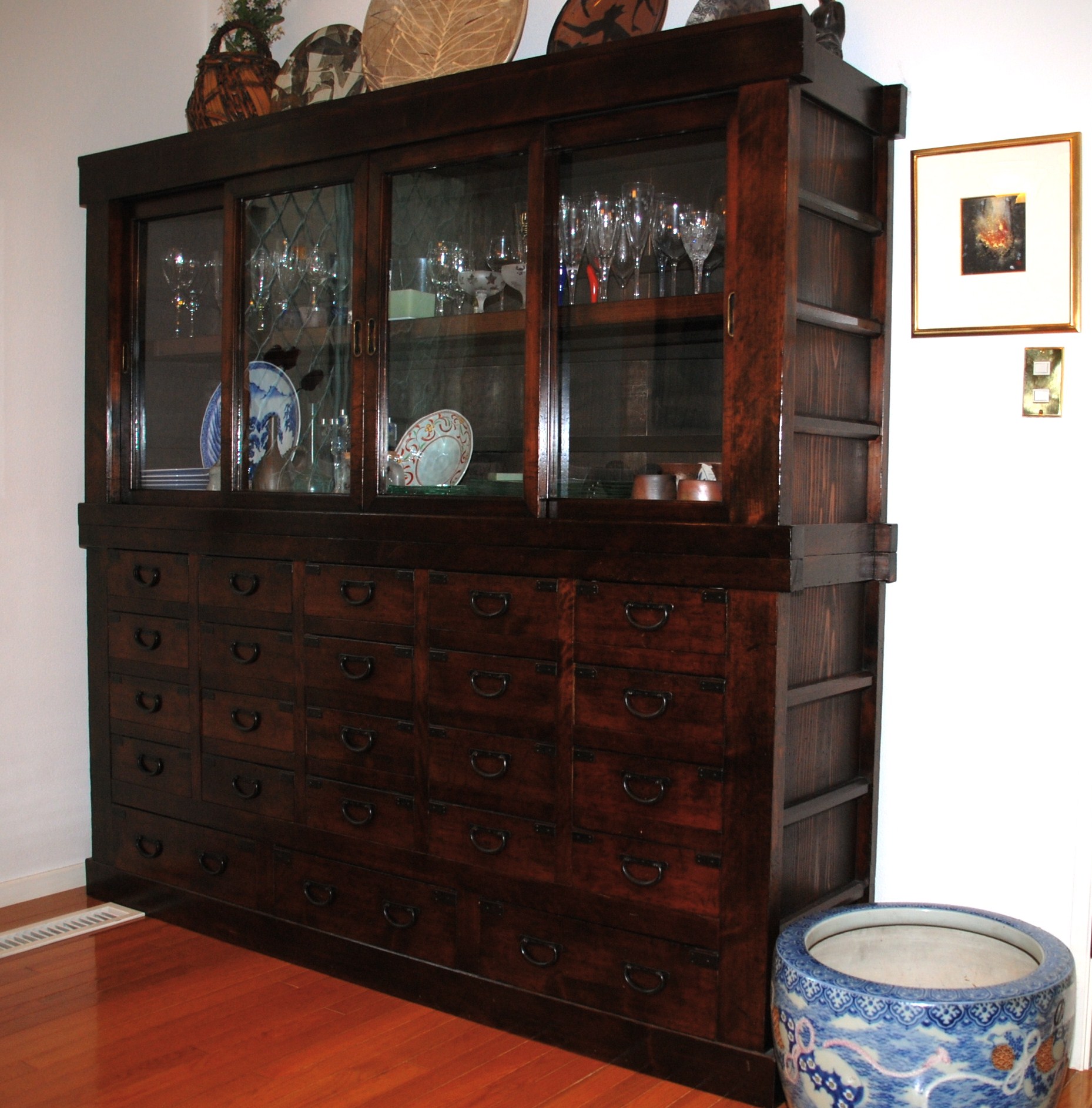
I have a large tansu, probably meant for shop display, but similar in shape to a mizuya tansu. I currently use it as a bookcase in my guest bedroom, but bought it with dreams of a large kitchen. Can’t you just see it in a kitchen, stacked full of transferware, glass and silver?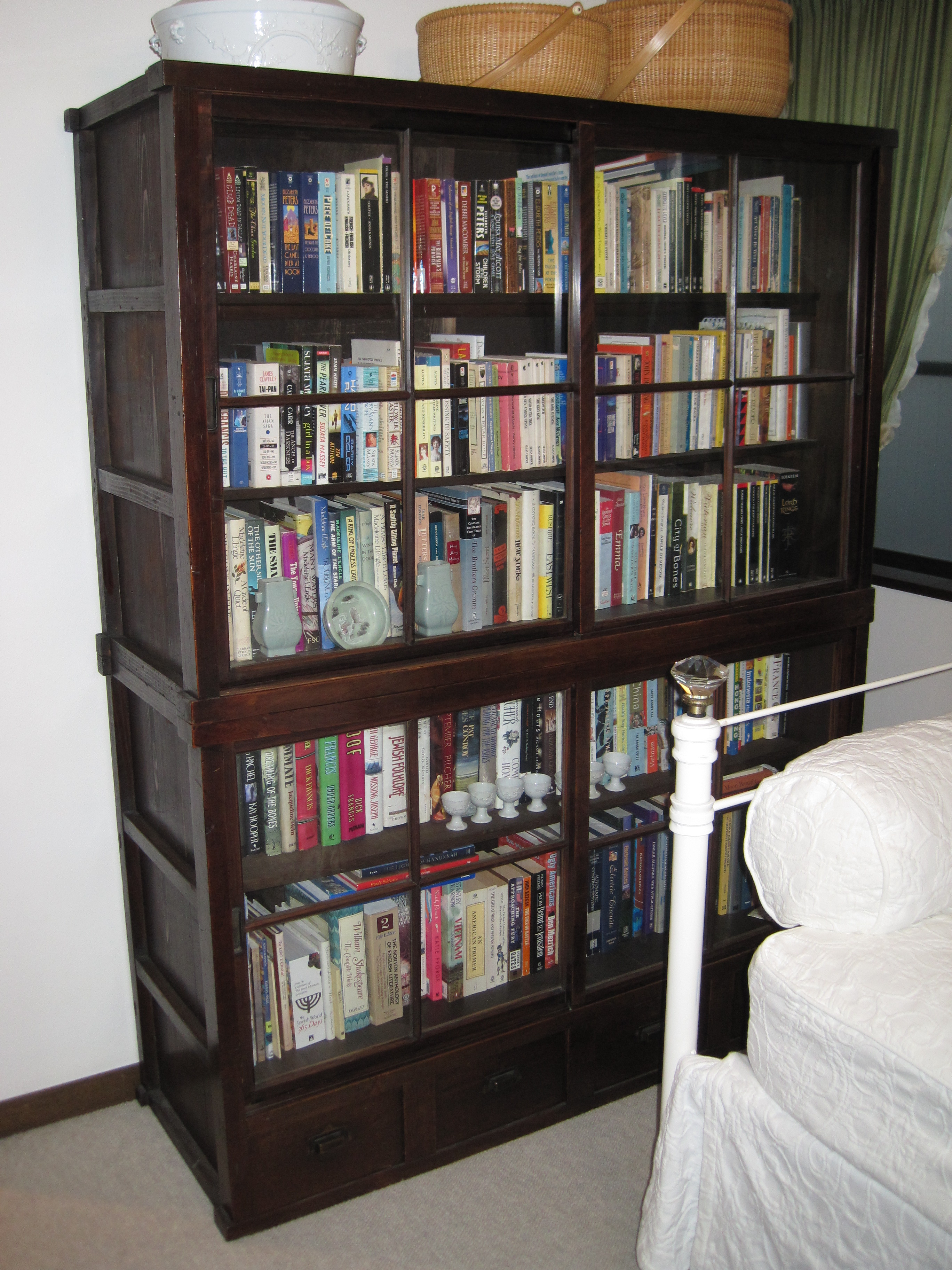
Image credits:1. V. Felgner, 2 & 3. Okura Antiques, 4. me, 5. via Chinoiserie Chic, 6-9. via House Beautiful, photo credit Eric Piasecki, 10-12. via Desire to Inspire, 13. K. Morganstern, 14. me

